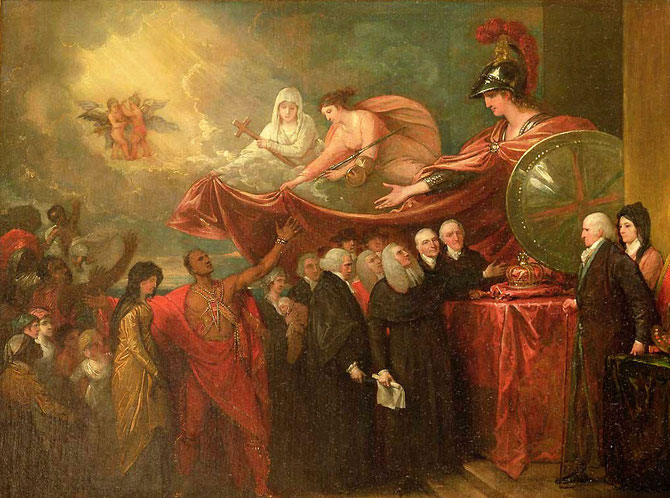Weird, wonderful stuff
Did Daniel Boone wear a coonskin cap?


This 1966 publicity still for the NBC hit TV show, Daniel Boone, got Boone's hat wrong, and it's unlikely that a frontiersman would use a pistol, which were slow to load, inaccurate, and more likely to be used in duels. That Boone actor Fess Parker is wearing a coonskin caps is due to one of his roles from a decade before, as Davy Crockett in a Walt Disney series. That series started a national craze for coonskin caps, which U.S. Senator Estes Kefauver, D-Tennessee, promptly donned in his run for the presidential nomination, as captured by Time magazine. Boone himself, according to his son, Nathan, "despised the raccoon fur caps and did not wear one himself." (My Father, Daniel Boone: The Draper Interviews with Nathan Boone, Neal O. Harmon, ed. University Press of Kentucky, 1999, p. 37)
Book of Negroes

The Book of Negroes was the registration book that logged the names of African-American refugees from slavery and loyalists' slaves prior to the evacuation of New York by the British. More than 3,000 African-Americans were on the register. (From Guy Carleton papers, British National Archives, PRO 30/55/100, 10427. Digitalized in the Nova Scotia Archives.)
Britain welcomes the refugees

Destitute Indian, black, and white American loyalists are welcomed to England. Many rebel leaders pleaded with their countrymen for tolerance for their fellow Americans, but they were largely ignored. Most Native Americans who fought against the rebels to protect their land from speculators like George Washington and Daniel Boone were forced into exile, if not killed. American loyalists were terrorized into exile. Although the victorious rebels demanded return of escaped slaves, the British kept most of their pledges to free African-Americans who fought with them, and evacuated thousands of them. West’s original painting is lost, but he reproduced it in the background of an 1812 portrait of John Eardley Wilmot, the Loyalist Claims Commission's chief commissioner. (Yale Center for British Art, Paul Mellon Collection)
Combahee River, near the site of John Laurens' death

The Combahee River, S.C., near Tar Bluff, where Continental Army Col. John Laurens fulfilled his death wish on Aug. 27, 1782. Laurens and a small band he was with attacked (or was ambushed by) a much larger British force. The British were on a foraging mission because rebel Gen. Nathanael Greene refused to participate in a cease fire. The relationship between Laurens and his fellow Washington aide, Alexander Hamilton, was so close that historians have speculated as to whether they had a physical relationship. (Author photo, 2012)
The Revolution's last battle…India

The last battle of the American Revolution was fought on June 25, 1783, between the French, British, and their respective native allies—in Cuddalore (Goudelour), India. This map shows the field on June 13, just before an earlier British attack on French positions. The Indian Ocean ("Mer") is at the bottom. British positions are the red-and-black triangles; the French are in blue. ("Plan de l'affaire du 13 juin sous Goudelour dans l'Inde" by Aubineau Deplessis, ca. 1783, Archives nationales d'outre mer—French National Overseas Archives)
Simon Girty: rebel renegade, loyalist hero

Before Simon Girty became a respected loyalist liaison with Indians—or evil "white renegade" from the rebel settlers' perspective—he worked for the rebel government. This is a 1776 invoice for expenses he incurred "in the service of the public" for "The United States of America" related to a "journey to the Indian country." While the invoice itself appears to have been written in another person's hand, Girty signed "his mark"—the "S"—between "Simon" and "Girty." (New York Public Library Digital Collections, Manuscripts and Archives Division. Image ID 4011951)

View of Charlestown, 1774

Charlestown, S.C. (now Charleston) was British North America's fourth largest city and the economic hub of the South. The British would occupy the city for nearly three years. This pre-Revolution view was painted around 1774 by Thomas Leitch, a British-born New Yorker who visited Charleston. Little is know about him. The original painting, owned by the Museum of Early Southern Decorative Arts in Winston-Salem, N.C., is five-feet wide and nearly two-feet tall.
